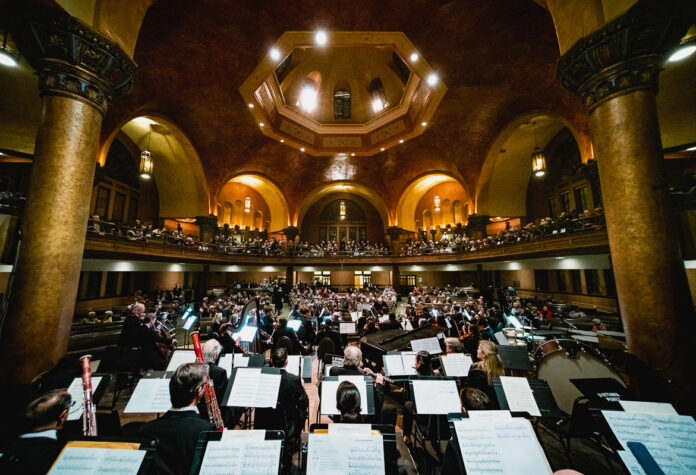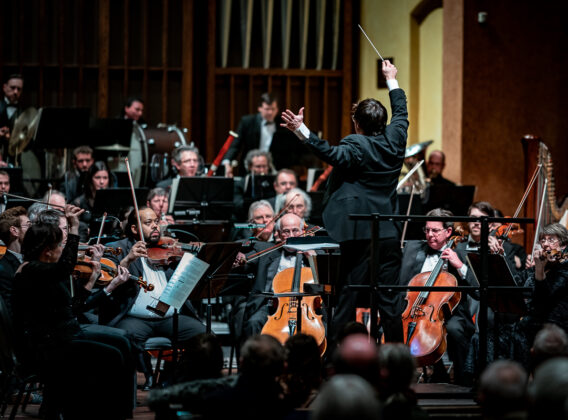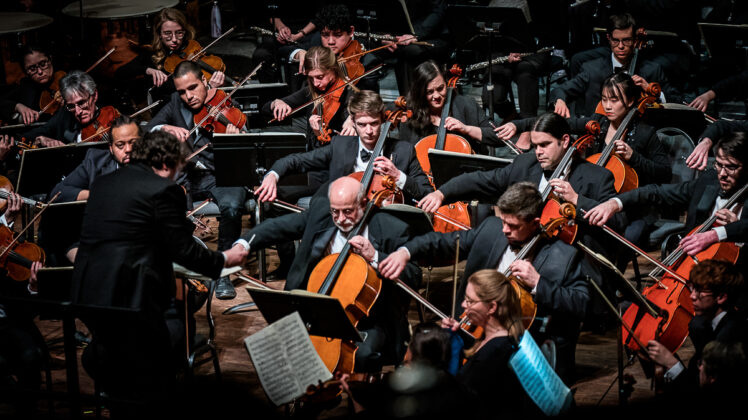
On March 6, the Ottawa Symphony Orchestra hosted an afternoon concert at the Carleton Dominion-Chalmers Centre titled It’s a Party. This concert was one of the orchestra’s first since it was forced to stop performing due to COVID-19 restrictions.
Originally, a full orchestral concert titled To the Girl Who Wants To Compose was planned for March 6 to highlight the accomplishments of women in classical music in honour of International Women’s Day.
Elements of the original concert included a program made up of pieces by female composers and conductor Janna Sailor, who was heralded by concertmaster Erica Miller as a “champion of supporting women in classical music.”
However, COVID-19 capacity limits led to the postponement of the original concert and a scaled-down chamber concert was planned in its place, To the Girl Who Wants To Compose, along with Jenna Sailor’s involvement, was rescheduled to 2023.
At the chamber concert, a 12-musician team, led by Concertmaster Erica Miller, performed a 12-piece program. Which in the opening statements by Sarah Devlin, were described as “the yummiest of comfort food for your ears.”

Devlin and Miller have had similar experiences as women in the classical music industry.
“You have your power structures and very frequently, the people at the top of those power structures are men,” Miller said. “So inherently, that alone changes everything.”
Miller said that prior to her role as concertmaster at the Ottawa Symphony Orchestra, she lived and worked in Philadelphia, Pa. as a freelance musician. During this time, she sat principal second in most of her jobs, which is the violinist who leads the second violin section—a step below the concertmaster who leads the first section.
Miller said that because of her gender and age, she wasn’t respected as a leader.
“As a young woman sitting in a leadership role, people did not want to follow me. They didn’t trust that I would be a good leader,” she said.
Men make up the majority of leadership roles in classical music. According to Miller, this affects every aspect of the industry, especially auditions for winds and brass sections. Many auditions are by invite-only and when these auditions are primarily overseen by men, fewer women are given the opportunity to audition.
Miller said because of this, women in classical music are not elevated to leadership positions.
Devlin echoed these sentiments in her experience being trained as a trumpet player at the University of Toronto. She said brass instruments are often viewed as masculine and all of her teachers at the University of Toronto were male.
Tristan Culbert, a percussionist in the Toronto Youth Symphony Orchestra, said this lack of female representation in leadership positions becomes more evident the higher up in education you go.
“In musical education, the teachers are mostly women, and with students, it’s split 50-50, but as you get up to the professional levels, it’s nearly all men,” Culbert said.
This male-dominated culture is one that Devlin and Miller agree is different in Ottawa, where a progressive tone is evident. The Ottawa Symphony Orchestra is not only led by two women, but it also has female board members and musicians.
Miller and Devlin agreed that while the industry continues to grow and include more women in leadership positions, events like the Ottawa Symphony Orchestra’s To The Girl Who Wants To Compose are key in highlighting the experiences of women breaking through glass ceilings in the classical music industry.
Featured image provided by the Ottawa Symphony Orchestra.







